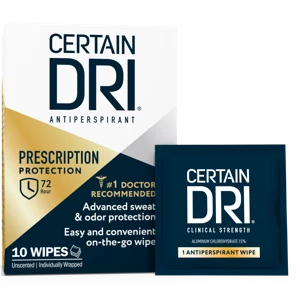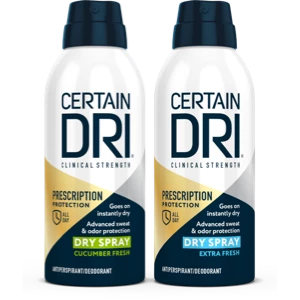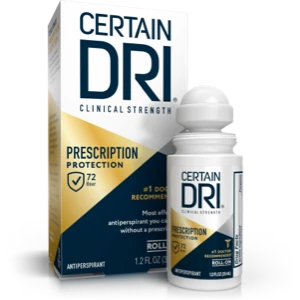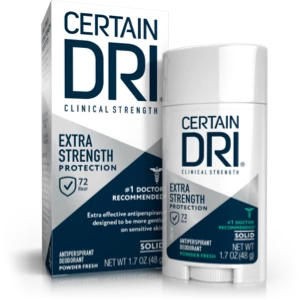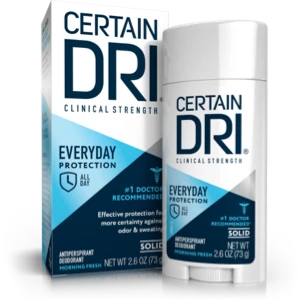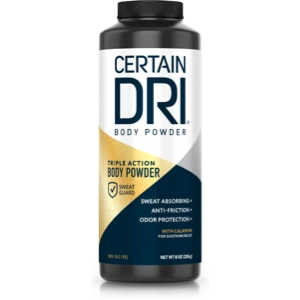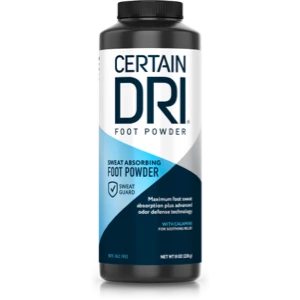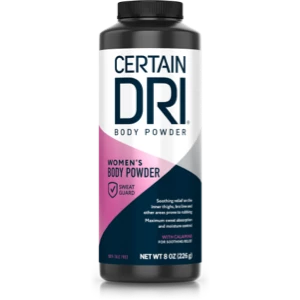Sweating too much? 4 next steps
If you think you sweat too much, you likely have really valid reasons. And, no, being concerned about abnormal sweating does not make you weird, superficial or a hypochondriac. In fact, one expert on excessive sweating told WebMD that “Pretty much anyone who comes to me complaining of excess sweating has it.”
So, if you’re sure your sweating is out of hand, we believe you and want to help you take better control of the situation. Here’s how:
1. Talk to your doctor to figure out why you’re sweating so much.
There are two types of excessive sweating (or hyperhidrosis): primary and secondary. Primary hyperhidrosis (often just called “hyperhidrosis”) is a medical condition of excessive, uncontrollable sweating with no clear cause. Secondary hyperhidrosis, on the other hand, is extreme sweating that’s a symptom of another medical condition or a side effect of a medication that you’re taking. This is a very key distinction and depending on which type of excessive sweating you’re dealing with, the appropriate (and safe) next steps may be very different. So, your first job when dealing with unwanted sweating is to talk to a knowledgeable healthcare provider so he or she can rule out medication side effects or underlying medical conditions that need to be treated. (Don’t change any of your medication schedules without a doctor’s supervision, of course.)
2. Discuss where you sweat and learn about the treatment options for those body locations.
If your healthcare provider determines that you have primary hyperhidrosis (excessive sweating NOT due to another medical condition or a medication you’re taking), the next step is for you to learn about the treatment options available for the type of sweating you have. Depending on where you sweat (hands, feet, face, underarms, back, groin, etc.) the management techniques can vary. Interestingly, no matter where you sweat, experts often recommend antiperspirants as the first step of treatment or as an addition to other treatments to boost symptom relief.
When you apply an antiperspirant, its active ingredients create superficial plugs just below the surface of the skin that block your sweat ducts. If your body senses that a sweat duct is not functioning, a feedback mechanism stops that duct’s sweat production (temporarily). Depending on the antiperspirant, plugs can last 24 hours or more.
For more powerful effects, choose a clinical strength antiperspirant like Certain Dri. These are the strongest antiperspirants available without a prescription from your doctor. They contain higher percentages of active ingredients than regular antiperspirants, or they contain different, stronger active ingredients. All Certain Dri’s antiperspirants are clinical strength and gentler on the skin than prescription formulations. Learn more about Certain Dri’s three different levels of sweat protection here.
3. Learn how to get the most efficacy out of your antiperspirant.
In order to work, the active ingredients in an antiperspirant need time to get down into the sweat ducts where they can do their jobs blocking sweat production. Since most people sweat less during the night, this makes bedtime the perfect time to apply antiperspirant. If you just apply antiperspirant in the morning, your daytime sweating will quickly wash off the active ingredients and they’ll never have the chance to really show you their stuff. It’s also important to apply antiperspirant to completely dry skin. If your skin is wet, the active ingredients won’t be able to work as well and skin irritation is more likely. If you’d like to learn more ways to maximize your antiperspirant’s impacts click here.
4. Find support and understanding.
Often, the impacts of excessive sweating can extend into many aspects of a person’s life. If sweating is interfering with your relationships, preventing you from participating in activities, making you feel less confident at school or at work, or is impacting your mood or how you see yourself and your future, consider reaching out. Friends, family, mentors, and healthcare professionals can listen and help you find catharsis, compassion, additional treatment, and wellness services so you can live your best life. To find more hyperhidrosis information and support, check out all the resources at SweatHelp.org from the International Hyperhidrosis Society.
Learn more about excessive sweating and how to deal with it, catch up on our other blogs.

